At Bertelles, we have spent the past couple of years researching the history of men's braces. Why? Because we strongly believe that you can’t have an impact on your market without understanding the origin and evolution of your product over time.
Modern braces as we know them were invented in the early 1800s. The product however, has been changing continuously throughout the ages, evolving with its time and always staying contemporary: in shape, size, details, materials, attachment solutions, etc.
There are many signs of this evolution, one of them being the amount of patents that are available in the digital archives of patent registry offices on both sides of the Atlantic. The inventors were especially prolific at the turn of the 20th century, trying to find new ways of attaching braces. The race seems to been settled on the metal clips as we know and use them today.
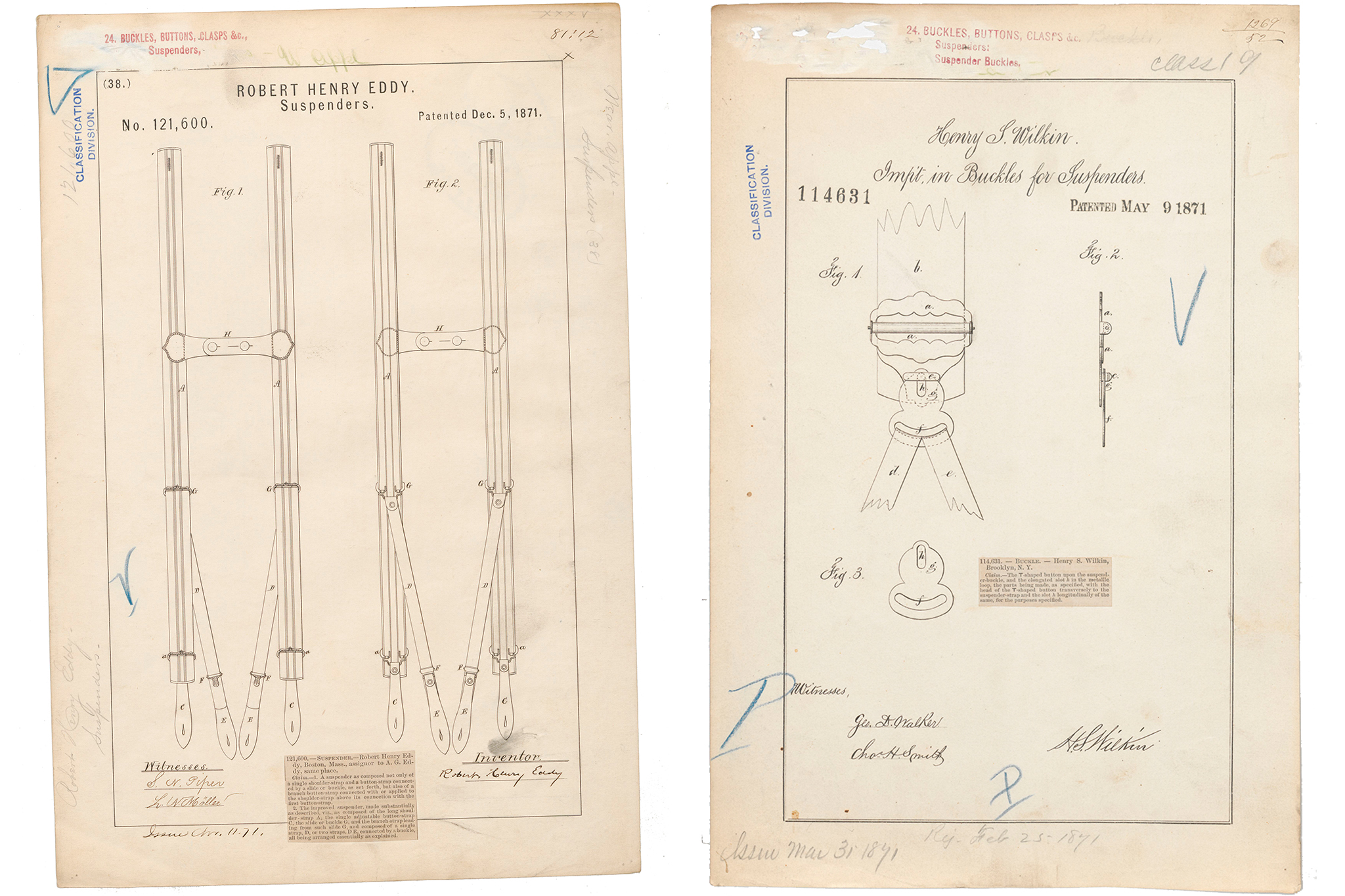
Another clear sign is the 20th century advertising of brands such as Ch. Guyot (France), Calvin Curtis (USA) or President Suspenders (USA). Old pictures are of course also an excellent source for product history even though the focus is rarely on the braces themselves. And finally, old pairs of braces enable us to understand the evolution of the product. Braces are so much part of our social history that they sometimes have their place in museum collections, including the MET in New York or the Victoria & Albert Museum in London.
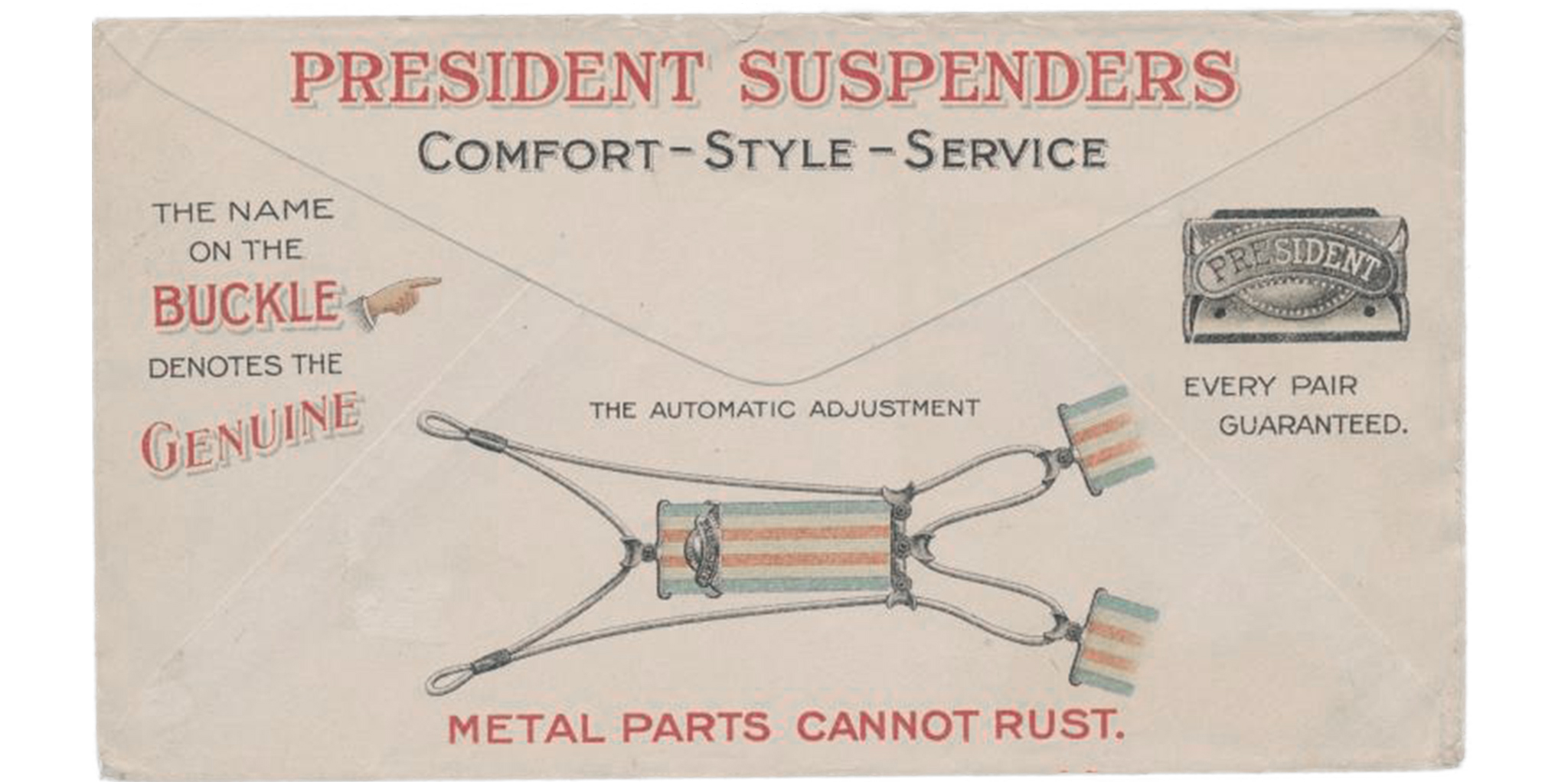
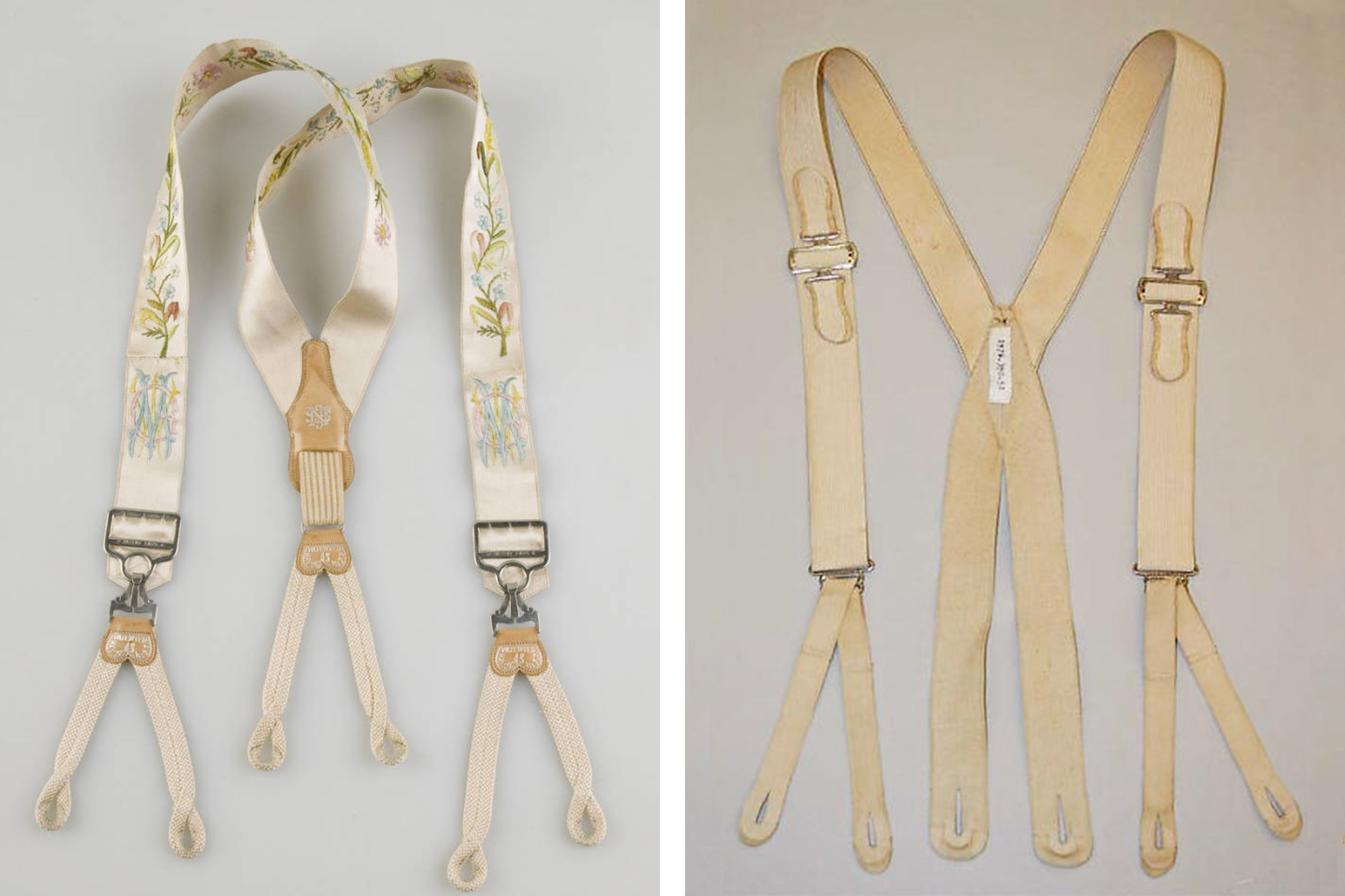
While up until the early 1930s braces were a widely used, if not the most widely used, technique to hold up men’s trousers, their popularity progressively declined to the benefit of the belt. They didn’t completely disappear though, but they became a tool mostly known and used with formal and business attires, except for the heavy duty braces still used by lumberjacks for example.
The deformalisation of business attire could have sounded the death knell for braces, but this was without counting on one key advantage they have: they are much more comfortable than a belt. So instead of disappearing, they are making a comeback and, as they have for over 200 years, they are evolving to be more comfortable and easier to use. In other words: more adapted to our modern use of them.
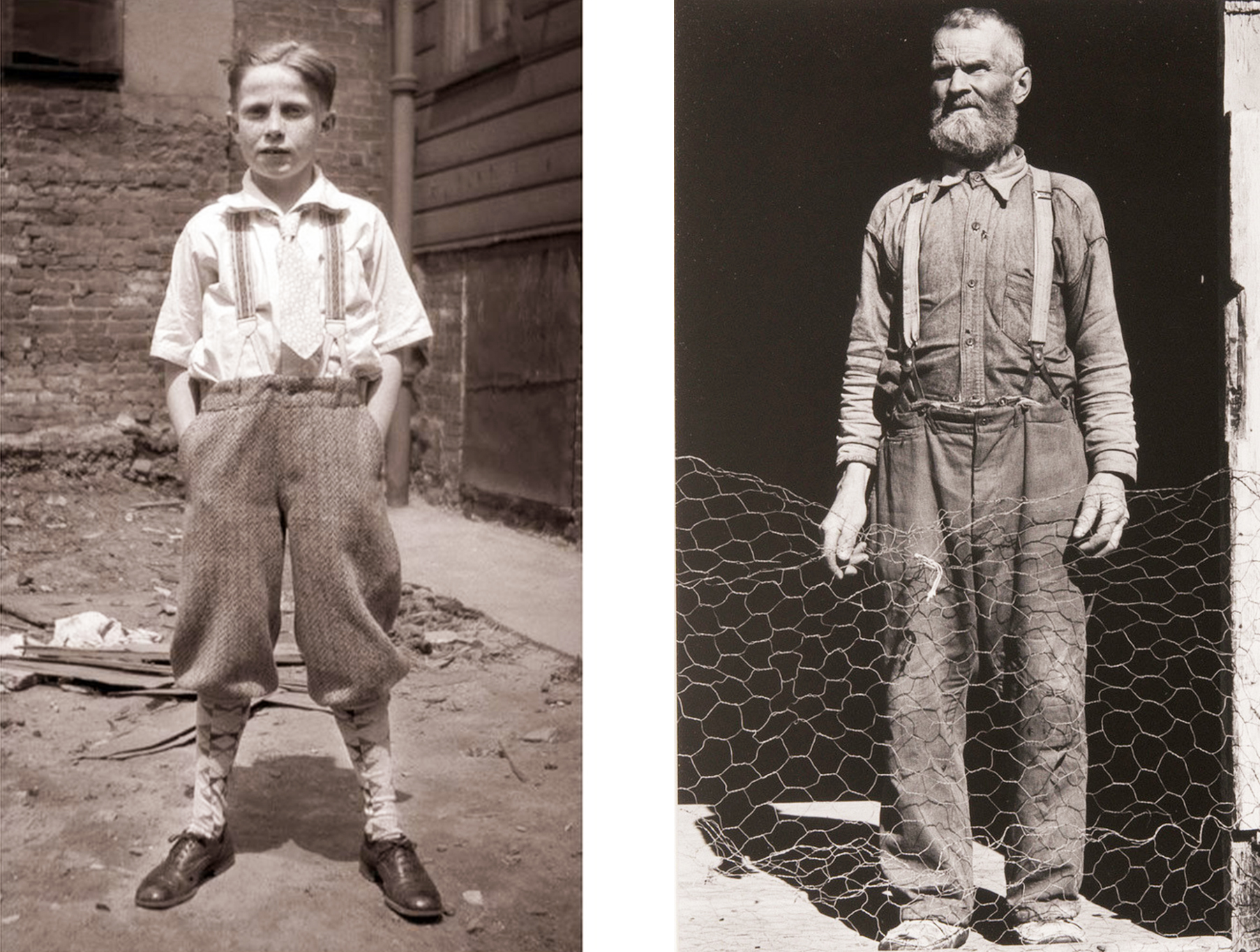
At Bertelles, we want to be part of this evolution and create braces that are always more comfortable, easier to use and more contemporary. This is how and why we use our research and take inspiration from historical braces while always being careful to adapt them to the modern day.
Our latest Selvedge Collection is a perfect example of this. We have taken inspiration from early 20th century workwear braces but have made many small adjustments to make them more contemporary. One of them is an option to switch from clips to leather straps in a few seconds, an option didn’t exist back in the day but enables them to be worn with any trousers, equipped with buttons or not.
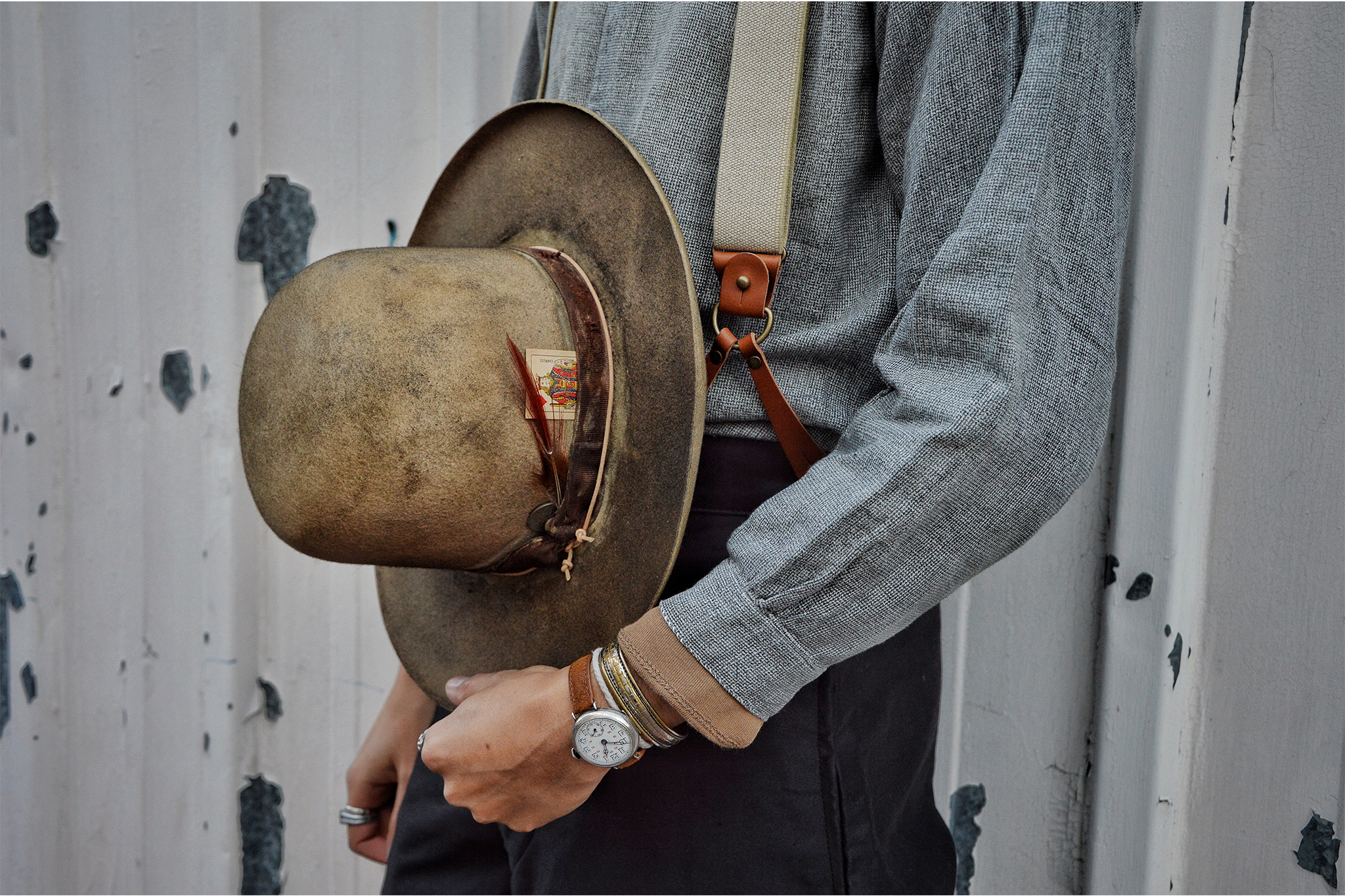
For our future collections, our aim is to keep increasing our impact on history of men’s braces…and maybe one day our grandkids will see a pair of Bertelles in the MET in New York or the V&A in London - who knows?




